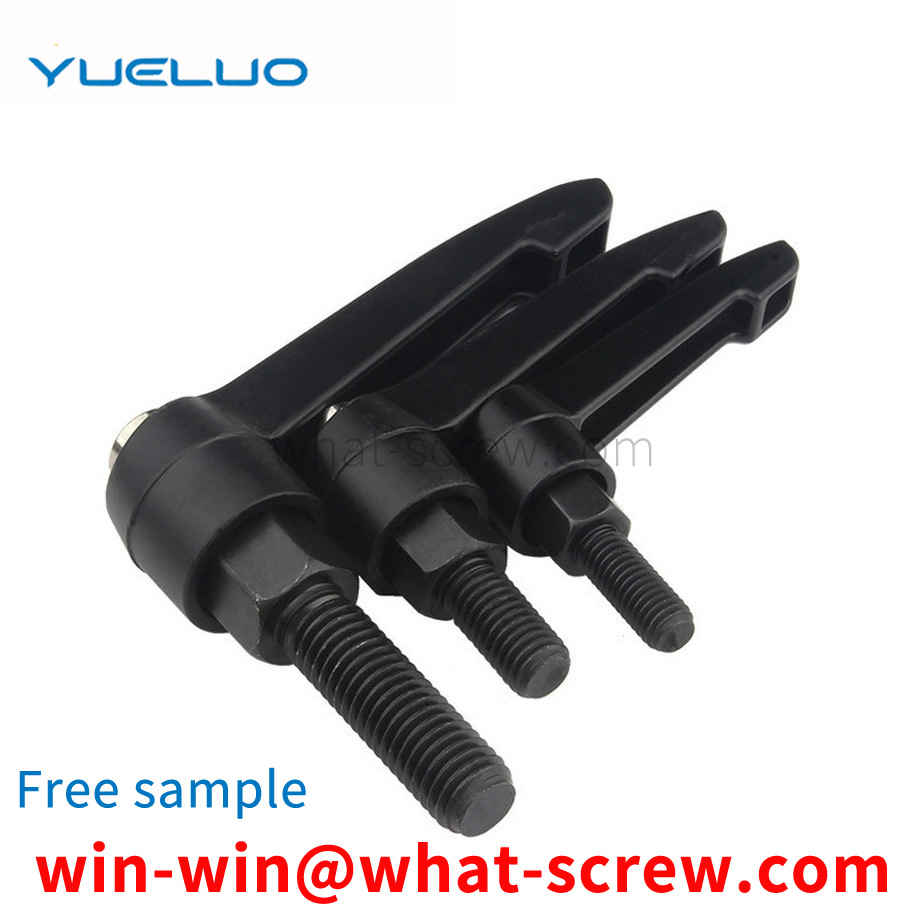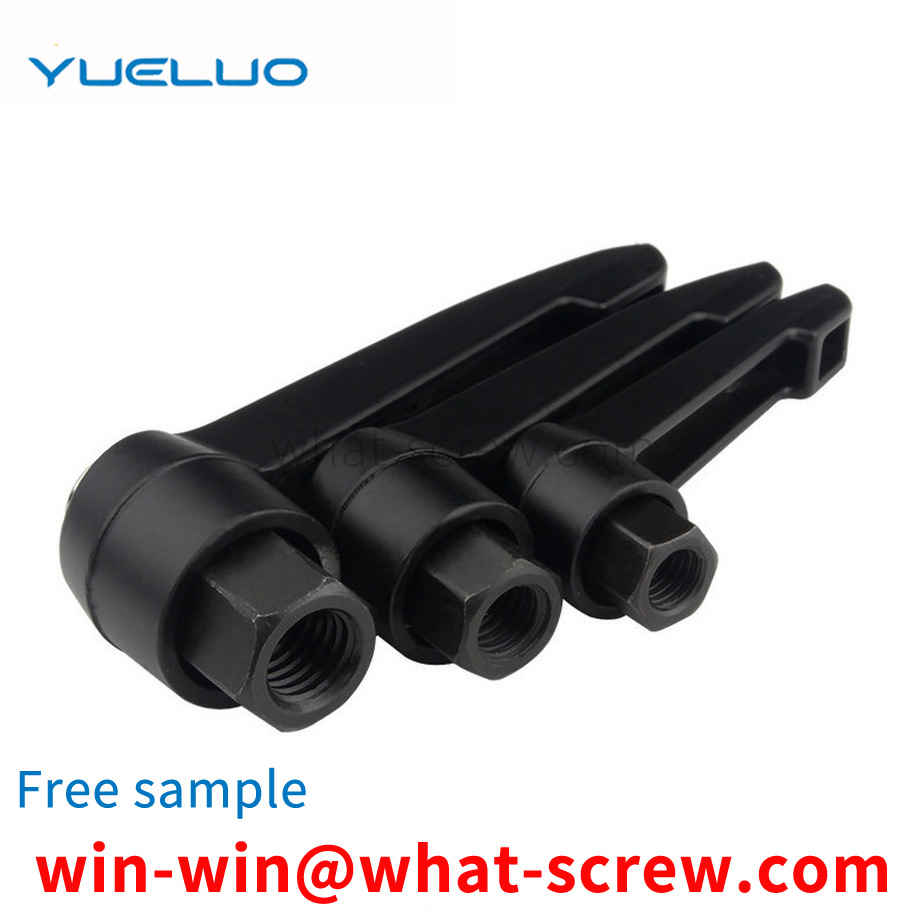The main purpose is to make industrial products form a fixed one. In use, it often occurs that the teeth cannot be closely attached, and the screw heads are broken if they are locked too hard, or the teeth are not locked tightly and fail to meet the conditions of use, all of which are accuracy problems. . Screws are mass products, not hand-made works of art. In mass production, they are supplied to consumers in order to achieve high precision, stable quality and popular prices. The accuracy of screws is usually 6g (class 2, the American standard IFI is 2A teeth), and the rough screws used in construction projects are 8g (class 3, IFI is 1A teeth). Common types of screws Screw A: Machine Screw: Machine screw B: Tapping Screw: Self-tapping screw (for metal and plastic) B-1: Sheet Metal Tapping Screw. (Iron die self-tapping screw) B- 2: Plastic Tapping Screw. (for plastic, self-tapping screw) C: Wooden Screw : Woodworking screw D: Drywall Screw : Cement wall screw E: Self Drilling Screws (stainless steel drilling screw, composite material drilling screw) F : Expansion screw, four-piece expansion screw, also known as: four-piece gecko. The grades of expansion bolts are divided into: 45, 50, 60, 70, 80. Materials of expansion screws: mainly austenitic A1, A2, A4, 1 stainless steel plate, metal steel plate, galvanized steel plate, engineering installation. 2. Indoor and outdoor installation of metal curtain wall and metal light compartment. 3 Generally, angle steel, channel steel, iron plate and other metal materials are combined for installation. 4. Assembly engineering of car boxes, container boxes, shipbuilding, refrigeration, screw machine equipment, etc. Features: 1. Drilling and tapping, locking is completed at one time, and the bonding force is strong. 2. Save construction time and improve work efficiency. E-1:STAINLESS STEEL SELF DRILLING SCREWS E-2:Bi-Metal Self Drilling Screws Common materials of composite drilling screws a.Low Carbon Steel: carbon steel carbon steel is divided into low carbon steel, medium carbon steel, high Carbon steel and alloy steel. b. SS-304: Stainless Steel 304 and 316 belong to stainless steel c. SS-302: Stainless Steel 302: better structural toughness d. Aluminum 5052: Aluminum alloy 5052 d. Brass: Brass e. Bronze: Bronze f . UNS C11000 Copper: Antimony Copper
Subject content and scope of application This technical requirement specifies the technical requirements for the manufacture, installation and inspection of high-strength bolted joints of mobile machinery and equipment. Contents not specified in this technical requirement shall be implemented in accordance with relevant national standards. This technical requirement applies to mobile machinery steel structures that require high-strength bolted connections. This technical requirement applies to quality control and construction methods for in-plant and on-site installations. 2. Joint surface treatment 2.1 For friction type high-strength bolt connections, the joint surfaces at the joints are required to be in close contact with each other and have a sufficient friction coefficient. When the design drawing does not specify the treatment requirements for the joint surface, the treatment shall be carried out according to the following regulations: sandblasting or shot blasting the joint surface of high-strength bolts, remove impurities such as rust and oil stains on the surface, and reach the Sa2.5 standard , the roughness is 50 ~ 75μm, and the friction coefficient shall not be lower than 0.40. When there are regulations in the drawings, follow the regulations in the drawings. 2.2 The friction surface of the treated high-strength bolt connection should take protective measures to prevent contamination with dirt and oil. It is strictly forbidden to make any marks on the friction surface of the high-strength bolt connection. During storage in the factory, or during transportation, to the installation site, special precautions should be taken to prevent contamination of the connection surfaces. The installation unit should pay special attention to protecting the cleanliness and friction surface characteristics of the connecting plate of the high-strength bolt and the connecting surface of the parent body. It is not allowed to use a grinder to grind the connecting surface of the connecting plate and the connecting surface of the parent body. 3 Inspection of the anti-slip coefficient of the friction surface of high-strength bolts The inspection of the anti-slip coefficient should be based on the steel structure manufacturing batch, and each 2000t of a single project is regarded as a manufacturing batch, and those less than 2000t are regarded as a batch. When two or more surface treatment processes are selected, each surface treatment process needs to be inspected. Each batch of three groups of specimens. If the connection is diffused to an external enterprise, each corresponding enterprise shall conduct an anti-slip coefficient test. 3.1 The test piece used for the anti-slip coefficient test should be processed by the factory or the diffusion enterprise. The test piece and the representative steel structure member should be of the same material, produced in the same batch, using the same friction surface treatment process and have the same surface state. And use the same batch of high-strength bolt connection pairs of the same performance level and store them under the same environmental conditions. The anti-slip coefficient test is carried out according to the test method of GB50205 Code for Acceptance of Construction Quality of Steel Structure Engineering. 3.2 The minimum value of the anti-slip coefficient inspection must be equal to or greater than the design specified value. When the above specified values are not met, the friction surface of the component should be reprocessed. The friction surface of the treated component is re-inspected. 4. Connection and installation of friction type high-strength bolts for steel structures 4.1 Preparations before installation 4.2 Select qualified bolts, nuts and washers. The guarantee period for the torque coefficient of the connecting pair is six months from the date of delivery. 4.3 Bolts, nuts and washers in the following cases are unqualified products and are prohibited from being used. a. The source (manufacturer) is unknown; b. The mechanical properties are unknown; c. The torque coefficient k is unknown; d. Defective; e. No performance test report attached; f. Mixed with other batches of bolts; g. Bolts with insufficient length, that is, the bolt head does not show the end face of the nut after tightening. Generally, the length of the end face of the nut to be taken out is 2 to 3 threads. h. The torque coefficient of the connecting pair exceeds the warranty period. Special attention should be paid to waterproofing during transportation and storage. 4.4 Before the construction of the large hexagonal head high-strength bolts, the torque coefficient of the high-strength bolt connection pair should be re-inspected according to the factory approval. Each batch of 8 sets should be re-inspected. Less than or equal to 0.010. The re-inspection method of the torque coefficient shall be carried out in accordance with the provisions of GB50205 Code for Acceptance of Construction Quality of Steel Structure Engineering. The installation of high-strength bolts should be carried out within a short period of time after the test.
Rivet nuts are mostly used in some chassis cabinets, square tubes and round tubes, fan production, equipment production, and zinc steel guardrails. Next, let’s talk about rivet nuts. The rivet nuts are also used on the top of the chassis cabinet sheet to provide threads. Its mode of operation is to use a riveting machine for riveting. In this case, the requirements will be higher, and a riveting machine is required. After the pressure riveting nut is riveted to the upper side of the sheet, it is very flat and will not have protrusions. Pressure riveting nuts are mainly used in the production of some chassis and cabinets, as well as some equipment production, water pumps, automobiles, and other production enterprises.
The embedded nut is made of copper nuts made of various embossed wires (usually lead brass, such as H59, 3604, 3602). The embedded knurled copper nuts that we come into contact with on a daily basis are processed by precision automatic lathes. The reference standard for embedded knurled copper nuts comes from the national standard GB/T809. The main operation method of the anti-loose nut is to inject the embedded knurled copper nut. After heating, it is embedded into the plastic part or directly injected into the mold. If the mold is injection-molded, the melting point of PA/NYLOY/PET is above 200°C , After the embedded nut is hot melted into the plastic part, the temperature rises rapidly. After injection molding, the plastic body rapidly cools and crystallizes and becomes hard. If the embedded nut temperature is still at a high temperature, it may fall to the place where the copper nut contacts the plastic part. Start to loosen or crack. Therefore, copper nuts are used instead of carbon steel nuts in the injection molding of embedded nuts. There are two ways to form the external knurling of the embedded copper nut. One is to use copper raw material to draw the knurl and then to produce it on the upper equipment. Generally, the pattern of this method is straight, and the other is to use The round copper material is directly embossed while tapping during the production process. This processing method can produce some non-standard size knurled copper nuts. The embossed shape of the embedded copper nut can be selected by the user, such as mesh, Character embossing, herringbone embossing and other knurling patterns.
In the fastening connection parts and parts assembly of various equipment and tooling, if the screw and nut anti-loosening treatment is required, there is a contradiction between anti-loosening and tightening or tightening and loosening. For example, the resistance is large when tightening. , or the resistance is large when loosening, or the anti-loosening effect is not good, or the service life is short, and it will be scrapped after 2 to 3 times of use. In a word, all kinds of anti-loosening nuts have the above problems at present. Therefore, it is necessary to utilise a new type of anti-loosening nut with low resistance when tightening or loosening, but with better anti-loosening effect and long service life.
We have many years of experience in the production and sales of screws, nuts, flat washers, etc. The main products are: heightening column LCF, chrysanthemum meson, hexagon socket screw, nut cap and nut and other products, we can provide you with suitable fasteners for you solution.



















 Service Hotline
Service Hotline




